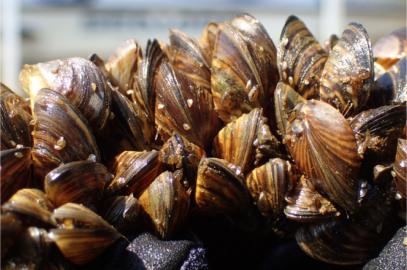The zebra mussel (Dreissena polymorpha) is a freshwater invasive species that has spread throughout waterways in Europe and North America. Economic effects include billions of dollars of damage to the power-generation industry and to recreation and tourism. The invasive mussels also crowd out native species, destroy those species’ food sources as they remove large quantities of phytoplankton in the water, and cause dramatic changes to the food web. Although many researchers have been studying D. polymorpha, there has been little genetic work done to date.
Results

- The researchers used long-read sequencing and scaffolding technologies to generate a chromosome-scale assembly of the highly repetitive zebra mussel genome. This represents the highest quality molluscan genome assembly to date.
- This genome fills in a large gap in the tree of life as zebra mussels are more than 400 million years diverged from the nearest sequenced relative. This is roughly the same amount of evolutionary divergence as that between humans and manta rays.
- The genome provides insights into processes that are important for the invasive success of zebra mussels, including shell formation, synthesis of byssal thread attachment fibers (which facilitate their attachment to surfaces and spread between water bodies), and responses to thermal stress.
- The researchers found that zebra mussels have the largest mitochondrial genome in any animal studied to date. The reason for this unusual mitochondrial genome structure is currently unknown.
- This chromosome-level assembly is a powerful new tool for basic and applied research on this and related invasive bivalves. The researchers identified several genes with roles in shell growth and hardening, byssal thread secretion and attachment, and tolerance of thermal and other stressors. These and others are targets for development of control technologies.
The paper can be read on the website of the journal G3: Michael A. McCartney, Benjamin Auch, Thomas Kono, Sophie Mallez, Ying Zhang, Angelico Obille, Aaron Becker, Juan E. Abrahante, John Garbe, Jonathan P. Badalamenti, Adam Herman, Hayley Mangelson, Ivan Liachko, Shawn Sullivan, Eli D. Sone, Sergey Koren, Kevin A.T. Silverstein, Kenneth B. Beckman, Daryl M. Gohl. The Genome of the Zebra Mussel, Dreissena polymorpha: A Resource for Invasive Species Research. 2021. G3 12(2). doi: 10.1093/g3journal/jkab423. (MI PIs are in bold; MSI staff members are in italics)